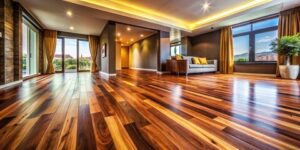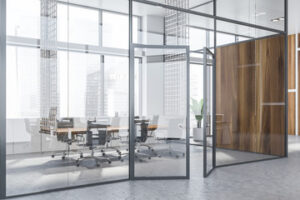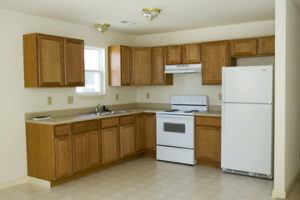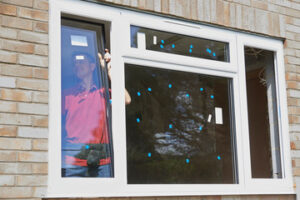Kitchen Remodeling Princeton revitalizes the heart of the home. It improves both function and style while increasing value. Thoughtful design enhances cooking efficiency and comfort. A well-planned kitchen supports modern living and personal taste.
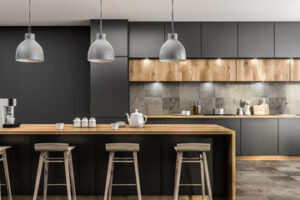
Start by considering how the kitchen functions daily. An open layout creates a sense of flow and accessibility. Proper positioning of appliances improves convenience and workflow. Defined zones for cooking, prep, and storage boost efficiency.
Maximizing storage is essential for an organized kitchen. Custom cabinetry and pull-out shelves make the most of every inch. Hidden compartments and vertical storage create a clutter-free space. Thoughtful design improves both form and function.
Countertops serve as both workspaces and design elements. Durable materials withstand daily wear while adding style. Smooth surfaces make cleaning easier and improve hygiene. Coordinating countertops with cabinetry creates a cohesive look.
Lighting transforms the kitchen’s atmosphere and usability. Task lighting improves visibility in cooking areas. Under-cabinet lights highlight workspaces and create depth. Soft ambient lighting enhances warmth and comfort.
Choosing the right flooring balances durability and style. Stain-resistant surfaces handle spills and heavy use. Consistent flooring between the kitchen and adjoining spaces improves flow. Warm tones add coziness, while cool shades offer a modern feel.
Backsplashes protect walls while adding personality. Bold patterns and textured finishes create visual interest. Neutral tones offer timeless appeal and easy coordination. A well-designed backsplash enhances both style and function.
Modern kitchens embrace smart technology for convenience. Hands-free faucets and smart appliances simplify daily tasks. Automated lighting and temperature controls increase comfort. Smart upgrades enhance both efficiency and ease of use.
Seating areas create a welcoming feel in the kitchen. Built-in benches and bar stools maximize seating without crowding the space. Comfortable materials invite relaxation and conversation. Thoughtful seating arrangements enhance social interaction.
Open shelving provides storage and display opportunities. Carefully curated pieces reflect personal style. Uniform dishware and decorative accents create a clean, cohesive look. Open shelves balance practicality with aesthetics.
Islands serve as multifunctional centers in modern kitchens. They provide additional counter space and storage. Integrated sinks and cooktops increase functionality. Well-placed seating transforms an island into a gathering spot.
Cabinet design influences the overall kitchen aesthetic. Shaker-style doors offer classic appeal, while flat-panel designs create a modern feel. Soft-close hinges enhance comfort and longevity. Custom finishes reflect individual taste.
Color choices define the mood of a kitchen. Soft neutrals create a calming atmosphere. Deep, rich tones add warmth and sophistication. Pops of color through accessories maintain a balanced look.
Hardware selection adds subtle yet impactful details. Sleek handles and knobs create a modern feel. Mixed metals offer contrast and depth. Coordinated finishes maintain visual harmony.
Efficient layouts improve both cooking and cleaning experiences. The work triangle between the sink, stove, and fridge enhances flow. Ample counter space supports meal preparation. Clear pathways prevent congestion and improve safety.
Ventilation enhances comfort and air quality in the kitchen. Range hoods and exhaust fans remove cooking odors and moisture. Silent operation ensures a peaceful environment. Proper ventilation protects finishes and surfaces.
Window placement influences both lighting and ventilation. Large windows increase natural light and outdoor views. Frosted glass ensures privacy while maintaining brightness. Consistent window treatments tie the design together.
Mixing textures adds depth to kitchen design. Matte finishes contrast with glossy surfaces for balance. Wood accents provide warmth against metal and stone. Thoughtful layering of materials enhances visual interest.
Customized storage solutions adapt to specific needs. Spice racks, cutlery trays, and pull-out bins improve organization. Adjustable shelving accommodates changing storage demands. Thoughtful design enhances efficiency and ease of use.
Pantry organization improves meal prep and reduces waste. Clear containers and labeled shelves simplify storage. Consistent organization makes ingredients easy to locate. An organized pantry enhances both function and appearance.
Accent pieces personalize the kitchen environment. Decorative bowls, framed art, and plants add character. Coordinated colors and materials maintain harmony. Subtle decor enhances warmth without overwhelming the space.
Multi-functional spaces support modern lifestyles. A kitchen desk area creates a convenient workspace. Beverage stations and coffee nooks provide easy access. Flexibility ensures the kitchen meets changing household needs.
Eco-friendly materials align with sustainable living. Recycled surfaces and low-VOC finishes reduce environmental impact. Energy-efficient appliances minimize long-term costs. Sustainable choices blend with modern aesthetics.
Integrated appliances maintain a streamlined appearance. Panel-ready refrigerators and dishwashers blend into cabinetry. Flush-mounted ovens and microwaves enhance clean lines. A cohesive look enhances modern appeal.
Window seats enhance comfort and provide additional storage. Built-in cushions and hidden compartments increase functionality. Cozy seating areas create inviting gathering spots. Window seats balance comfort with practicality.
Soft textures soften the feel of modern kitchens. Woven rugs and linen curtains add warmth. Upholstered chairs and cushioned benches increase comfort. Layered textures enhance visual interest and coziness.
Statement pieces define the kitchen’s personality. Bold light fixtures and sculptural hardware create focal points. Contrasting finishes highlight architectural details. A single statement piece elevates the overall design.
Kitchen islands can function as both prep and dining spaces. Elevated bar seating encourages casual meals and conversation. Integrated storage increases functionality. Islands serve as a central gathering point.
Hidden storage solutions maintain a clean, uncluttered look. Toe-kick drawers and under-cabinet shelves provide discreet space. Pull-out trash and recycling bins enhance convenience. Hidden storage improves both style and function.
Accent walls add personality to the kitchen. Patterned tile, reclaimed wood, or bold paint create a focal point. A single accent wall adds depth without overwhelming the space. Thoughtful placement ensures visual balance.
Smart faucets simplify meal prep and cleanup. Touchless operation improves hygiene and convenience. Temperature memory settings enhance user comfort. Smart technology integrates seamlessly into modern kitchens.
Built-in appliances enhance both function and style. Warming drawers, beverage fridges, and wine coolers increase convenience. Integrated units maintain a cohesive look. Built-ins create a streamlined, modern appearance.
Thoughtful zoning increases efficiency in kitchen design. Dedicated prep, cooking, and cleaning areas improve workflow. Strategic placement of appliances and storage enhances function. Zoning creates a balanced and organized environment.
A well-executed kitchen remodel enhances daily living. Modern updates improve both style and function. Investing in quality materials ensures long-lasting results. A thoughtfully designed kitchen creates a welcoming and functional heart of the home.
